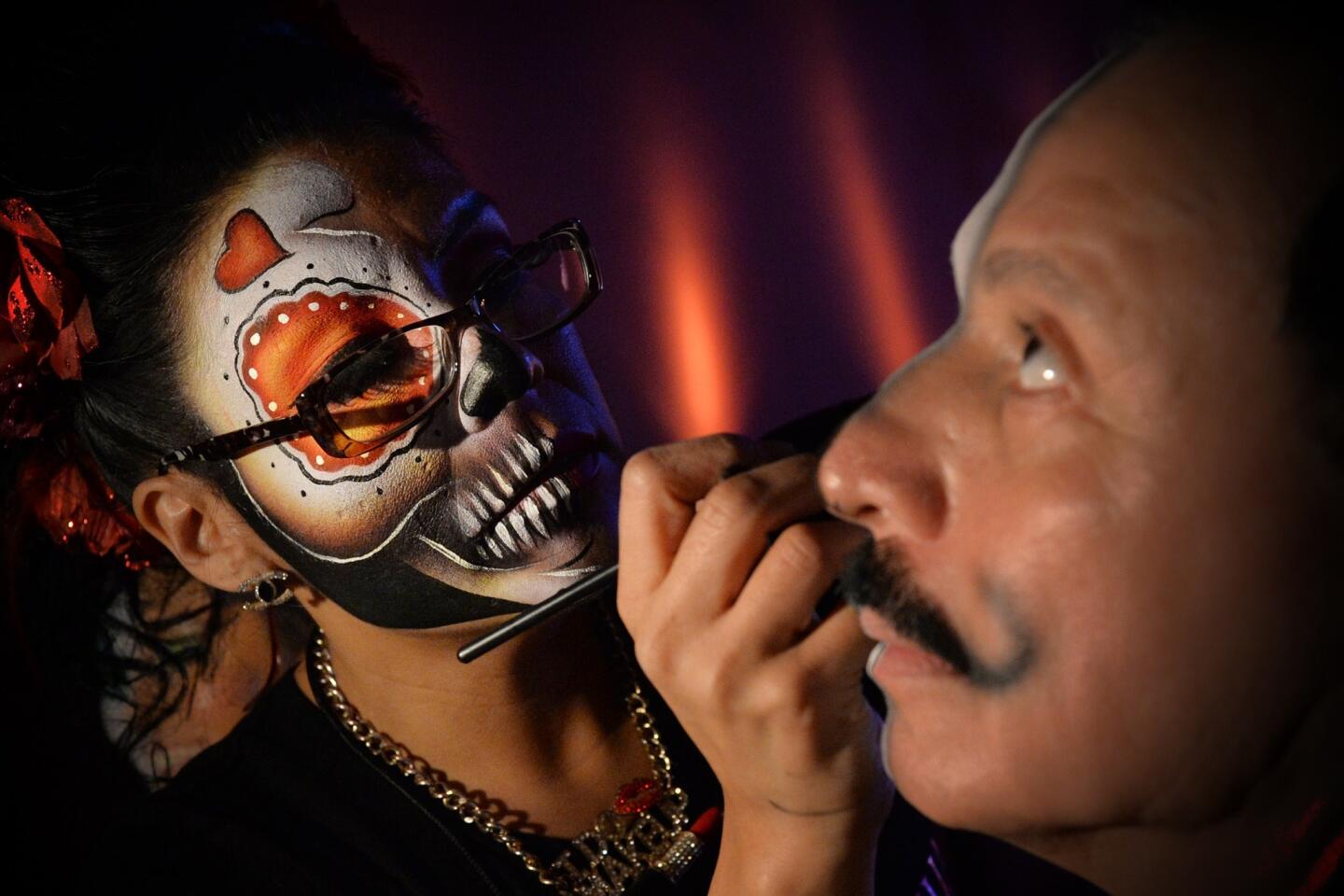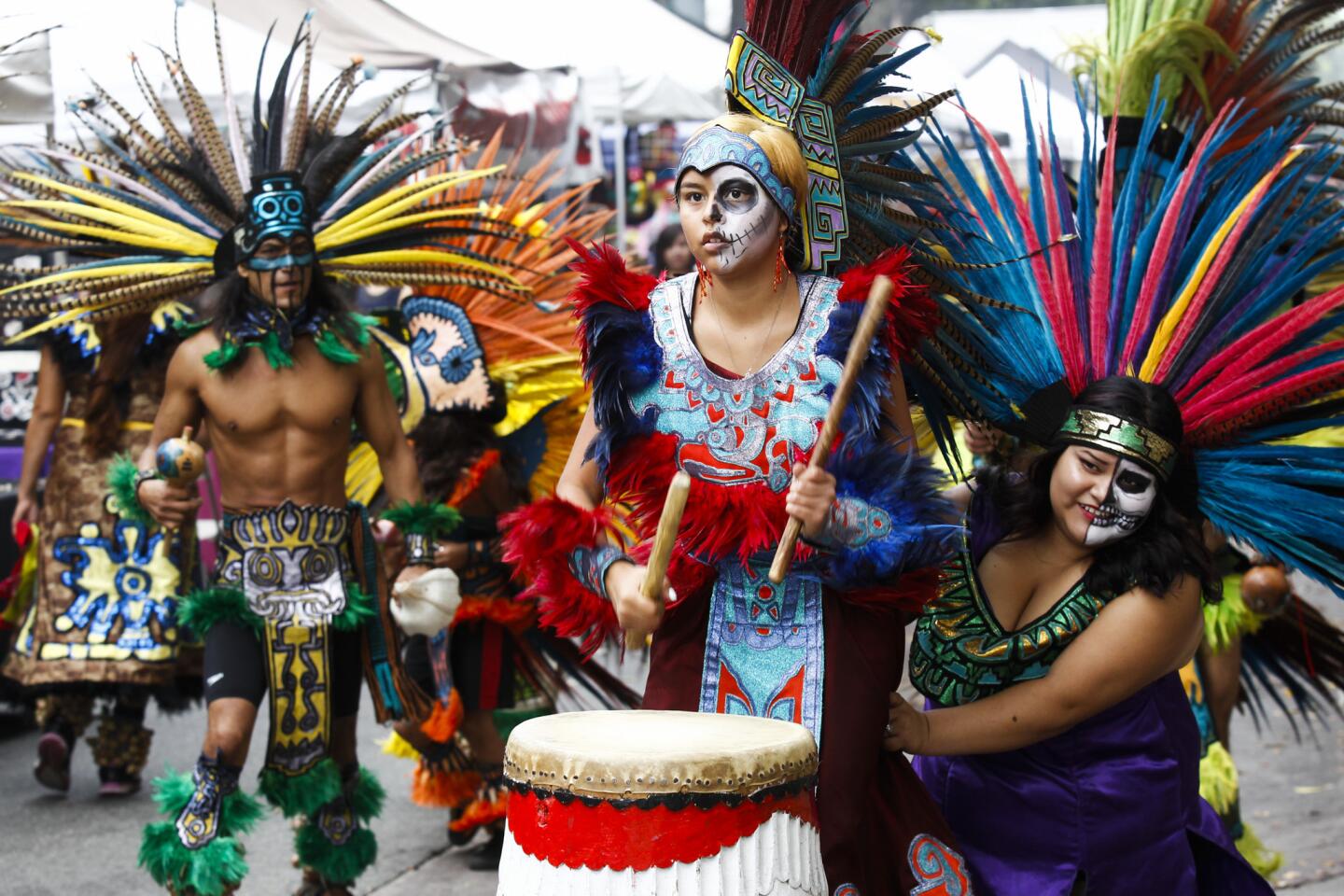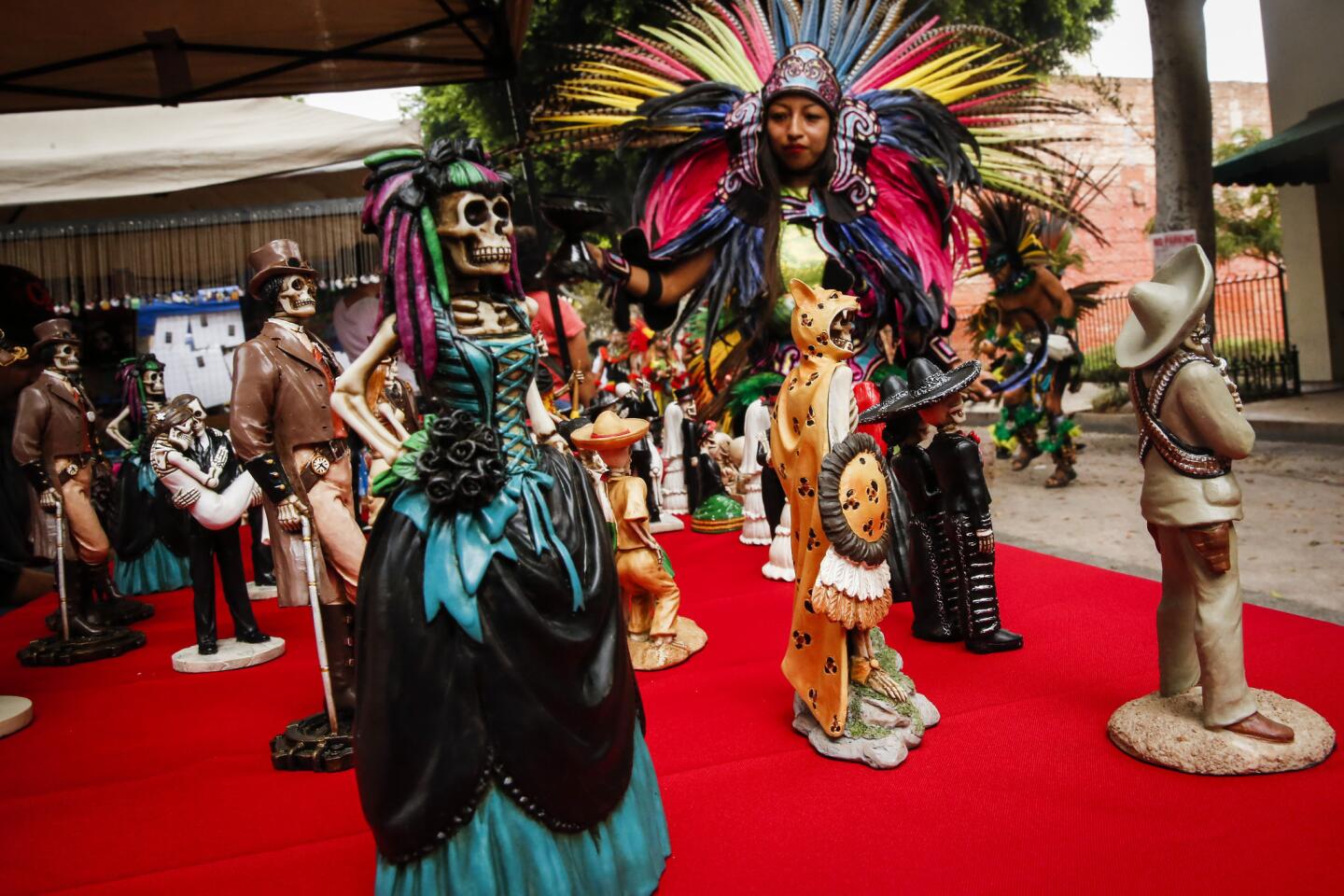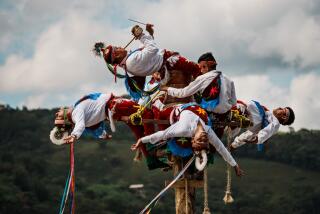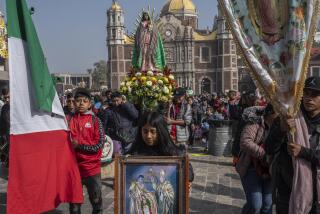Commentary: What the comforting, not creepy, Día de los Muertos can teach us
Día de los Muertos — the Day of the Dead — will be celebrated Saturday and Sunday in Mexico and parts of the U.S., including the Southland, but unlike Halloween, it’s not a fright fest.
“The Mexican … is familiar with death,” wrote Nobel-prize-winning poet Octavio Paz, who was born in Mexico City. “[He] jokes about it, caresses it, sleeps with it, celebrates it. It is one of his favorite toys and his most steadfast love.”
Which may explain some of the underpinnings of a celebration that embraces death as another phase of life. You’ll see skeletons and hollow-eyed faces painted to look like skulls and you’ll see pan de muerto — bread of the dead — but the day isn’t supposed to scare you witless.
Rather, it’s to let you remember your loved ones who have passed on and to keep death from being a much-to-be-feared finale, a distinctly different approach from Americans’ mind-sets.
“For many Americans, modern medical advances have made death seem more like an option than an obligation,” Dr. Craig Bowron wrote in a Washington Post opinion piece titled “Our unrealistic views of death, through a doctor’s eyes.”
“Our culture has come to view death as a medical failure rather than life’s natural conclusion.”
Not so the Mesoamericans. Día de los Muertos grew from a celebration whose spiritual leader was Mictecacihuatl, the Lady of the Dead. With the arrival of the Spanish in Mexico, indigenous customs melded (or were forced to meld) with Catholicism, which celebrates All Saints Day and All Souls Day on the first two days of November, and a new tradition began to evolve.
The celebrations occur in many parts of the world — even Cambodia, although the origins are different — but it is Mexico where there festivities are most fervent.
Ofrendas — or altars — are built; you’ll see marigolds on those altars or graves. The pungent flower is said to be the New World equivalent of the lily and its odor, along with incense, is said to help guide the dead back to the gravesite.
Favorite foods of the deceased are placed on those graves in an effort to lure them back for a spiritual family reunion.
Celebrations will occur all over Mexico and also in Los Angeles, including the Hollywood Forever Cemetery from noon until midnight on Saturday. Tickets cost $20 and you can learn more at the website.
Olvera Street’s celebration continues through Nov. 3 and includes the exhibit “Sacred Memories: Contemporary and Cross-Cultural Expressions of the Dead” at Pico House Gallery, 424 N. Main. It will be open from 10 a.m. to 3 p .m. and from 5 p.m. to 8 p.m. on Saturday, Sunday and Monday.
Those are but dozens, so you may see an abundance of calaveras or calacas -- the skulls or skeletons. When you do, smile. It’s death you’re laughing at.
Follow us on Twitter at @latimestravel
More to Read
Sign up for The Wild
We’ll help you find the best places to hike, bike and run, as well as the perfect silent spots for meditation and yoga.
You may occasionally receive promotional content from the Los Angeles Times.
